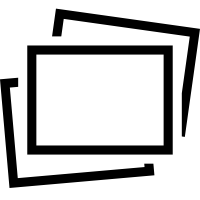The earliest titles reveal a burgeoning fascination with digital tools as a new medium for artistic creation. In 2008, we see the foundational exploration of what digital means for art, with titles like "Back to Digital Crayons" suggesting a return to basic artistic expression but with new tools. There's an immediate dive into abstract forms ("Abstracts and Fragments") and the exciting potential of algorithmic creation, as hinted by "Artificial Evolution" and "From Chemicals to Creation." This period is about establishing the digital art vocabulary.
By 2009, the field began to mature, with a clear focus on "Digital Master" artists emerging. Fractal art, a cornerstone of early digital aesthetics, gains specific mention with "Fun with Fractal Art" and "The Spiral Effect." A notable shift is the introduction of "Revisualizing Visualization," indicating an emerging awareness of digital tools for more than just art, but also for communicating information visually.
2010 titles suggest digital art is recognized as a dynamic, "Alive and Digital" medium. There's a sense of urgency and efficiency in "Working in a Fast Medium," and the concept of "Serial Crossover" points to early interdisciplinary explorations. Importantly, the idea of "An Abstract Career" hints at digital art becoming a viable professional path.
The Artist's Journey: Experience, Recognition, and Learning (2011-2012)
This period shifts focus from the medium itself to the artists and their experiences within the digital realm. In 2011, the practicalities of digital art come into view. We see the importance of skill acquisition ("The Power of Tutorials") and the profound engagement artists find in their work ("Diving into the Flow," "When Work Becomes Bliss"). The rise of digital exhibition spaces is highlighted by "Her Own Virtual Gallery of Art," signifying new ways to showcase creations. There's also a sense of artistic independence in "Against the Grain."
2012 further emphasizes the individual artist, with titles celebrating pioneers like "Jerry Palmer: Digital Painter" and "A Saturation of Firsts: Lillian F. Schwartz." The exploration of the creative process delves deeper, as seen in "From Right Brain to Left Brain," suggesting a blending of analytical and intuitive approaches. Digital creation is presented as a means of personal expression ("Reflecting the Prism of His Life") and a way to integrate different realities ("The Best of Both Realities"), showing digital art becoming more mainstream and recognized ("Her Work Is All the Buzz").
Conceptual Depth and Broader Applications (2013-2014)
This phase sees a deeper conceptual engagement with digital art and an expansion into its practical, societal applications. 2013 titles explore the philosophical underpinnings of digital creation. The direct link "From Code to Art" underscores the technical foundation of the medium, while themes of intellectual curiosity ("The Joy of Exploration and Discovery") and the act of pure creation ("Something out of Nothing") are prominent. The interdisciplinary nature of creative thought is evident in "Dreams, Tea, and Science," suggesting a holistic approach to creativity.
By 2014, the scope of digital technology extends beyond pure artistic expression into societal preservation and interpretation. The explicit mention of "CultLab3D: Digitizing Cultural Heritage" marks a significant shift towards using digital tools for practical, large-scale applications. While still appreciating the "Poetry of Colors" and "Transforming Fractals," there's a broader understanding of digital art's role in "Filtering the World" and its "Eventual Triumph" as a significant cultural force.
Advanced Aesthetics and Interdisciplinary Bridges (2015-2016)
This period signals a maturation of digital art forms, with a refined focus on aesthetics and a deeper engagement with complex concepts. In 2015, there's a re-emphasis on "Abstract Creative Practice" and a celebration of the "Infinite Flexibility with Layers" that digital tools offer. The connection between "The Wonder and Beauty of Science" and art is highlighted, reinforcing a recurring theme, and "Electrifying Digital Abstract Art" suggests a new level of vibrancy and energy. The exploration of "Fractal Terrain" continues, indicating ongoing fascination with these complex forms.
2016 pushes the aesthetic boundaries further. "Improvising in Three Dimensions" points to sophisticated advancements in digital sculpture and virtual environments, while "Landscapes of the Digital Baroque" implies intricate, ornate, and complex digital designs. There's also a reflective, historical turn, with "A Genealogy of Fractal Code" suggesting a deeper understanding and analysis of the evolution of these digital forms. The concept of "Pure Abstraction" remains central, often highlighted for "Outstanding Design."
Data, Communication, and Collaboration (2017-2018)
The most recent years pivot significantly towards the communicative power of digital tools, particularly in the realm of data and collaboration. 2017 showcases a clear emphasis on making sense of complex information. Titles like "Visualizing Science" and "Stories in the Data" highlight the growing importance of digital techniques for interpreting and presenting scientific and numerical information. This marks a continuity from earlier "visualization" themes but with a much stronger, applied focus on data. The creative process is also explored in terms of complexity, with "Control and Release in Complex Relationships" and the spontaneity of "Without a Plan."
Finally, in 2018, the prevailing themes are interdisciplinarity and effective communication. "Wearing Multiple Hats" and "The Nature of Collaboration" underscore the necessity of diverse skills and teamwork in digital endeavors. "Improving Visual Communication" explicitly states a practical outcome, building on the previous year's focus on visualization. The concept of "Alchemical Transformation" suggests a profound, fundamental change driven by these digital, collaborative processes, indicating a mature and impactful stage of digital innovation.

